Nanodisc Technology Platform
Background
Overview
Nanodisc technology shakes up how we study membrane proteins. It sets up an environment similar to the natural cell membrane, ensuring proteins stick to their native shape and activity outside the cell. These proteins are vital—they’re involved in signaling, molecule transporting, and energy conversion. Plus, they’re a major focus in medicine, being targets for most drugs. Yet, dealing with them is tough because they’re hydrophobic and complex, making them hard to isolate and analyze. Traditional methods often use detergents, but these can mess up the proteins’ natural structure.
With nanodisc technology, membrane proteins are embedded into a stable lipid bilayer without detergents, providing an environment similar to living conditions. This approach resolves many limitations of traditional methods but still requires specialized technical support. This includes preparing the nanodiscs, assembling membrane proteins, and developing suitable analysis techniques.
To help clients tackle these challenges, we offer comprehensive nanodisc technology services. Our solutions not only enhance the yield and quality of membrane proteins but also lay a solid foundation for structural analysis and functional studies down the line.
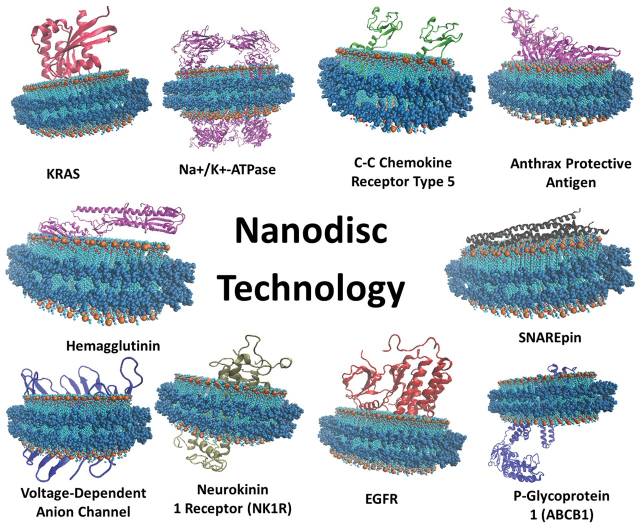
Fig. 1. Examples of proteins incorporated into nanodiscs. (Rouck, et al. 2017)
Advantages of Nanodisc Technology Platform
High Stability : Nanodiscs offer a membrane-like environment that helps proteins maintain their natural structure, steering clear of the damage detergents might cause.
Great Control : You can tweak the setup of nanodiscs to adjust the size and properties of the lipid bilayer, making them flexible for various research needs.
Detergent-Free : Using nanodiscs means there’s no need for detergents, which minimizes any negative impact on the protein’s structure and function.
Compatible with Many Tools : Nanodiscs work well with various modern analysis methods like NMR, X-ray crystallography, SPR, and Cryo-EM.
Applications of Nanodisc Technology Platform
Analyzing Membrane Protein Structures : By keeping things stable, nanodiscs make it easier to map out 3D structures using techniques like X-ray crystallography and cryo-EM.
Studying Functions : They let you examine how membrane proteins work under conditions that closely resemble their natural environment, such as checking enzyme activity and studying signal transduction.
Drug Screening : Nanodiscs are invaluable in drug development for high-throughput screening to see how drugs interact with membrane proteins.
Immunology Research : Used in immunochemical analysis and antigen presentation tests, they aid in developing vaccines and therapeutic antibodies targeting membrane proteins.
Biosensing : When combined with technologies like SPR and BLI, nanodiscs help in real-time monitoring of interactions between biomolecules.
Other Uses : They’re also applicable in cellular experiments and studies focusing on metabolic pathways involving membrane proteins.
Service Details
Service Process

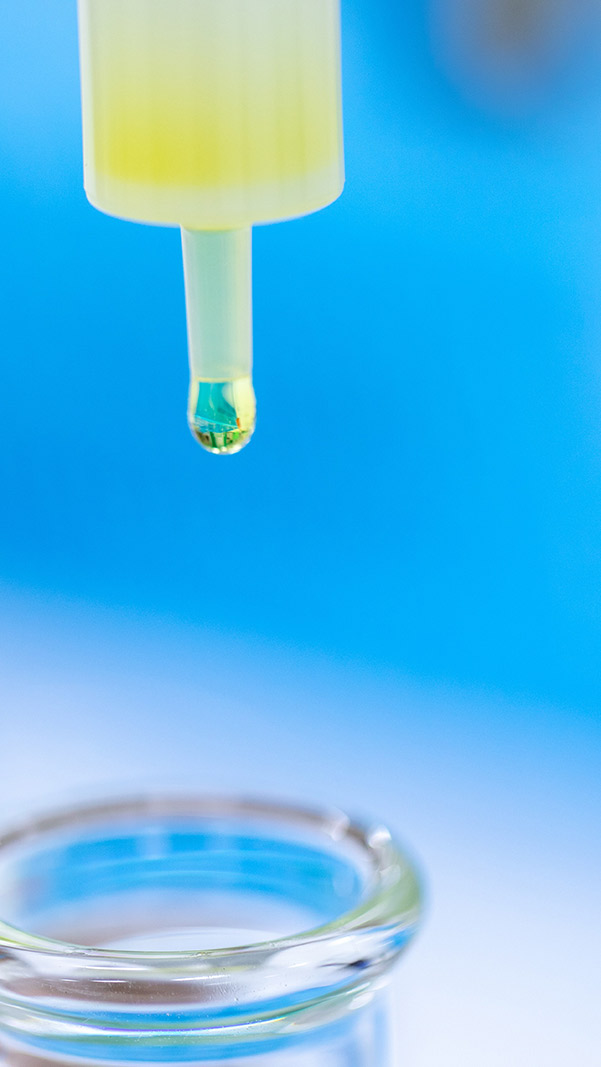
What We Offer?
Choosing the Right Expression System for Membrane Proteins
- Custom Expression System Choices: Depending on your membrane protein’s specifics and your needs, you can choose from expression systems like E. coli, yeast, or mammalian cells (like HEK293, CHO cells), and mammalian expression systems. Each option is tailored based on the protein’s complexity, post-translational modification requirements, and desired yield.
- Optimizing Expression Conditions: We fine-tune parameters like growth conditions, induction settings, and temperatures for various systems to ensure efficient expression of your membrane proteins.
Nanodisc Assembly and Membrane Protein Integration
- Preparing Nanodiscs and Embedding Proteins: The expressed membrane proteins are combined with nanodiscs made of phospholipids and apolipoproteins, forming a stable complex. This environment closely mimics a biological membrane, helping proteins retain their natural shape and function outside the cell.
- Solubilizing and Reconstituting Proteins: Nanodisc technology effectively solubilizes challenging membrane proteins by embedding them in lipid bilayers, eliminating the need for detergents and preventing disruption of protein functionality.
Purification and Analysis of Membrane Proteins
- Developing Purification Processes: We create specialized purification workflows tailored to each membrane protein’s characteristics, using techniques like affinity chromatography, ion exchange, and gel filtration to achieve high purity.
- Stabilizing with Nanodiscs: With nanodiscs, we not only improve protein stability during purification but also minimize losses during the process.
- Analyzing Functions and Structures: We offer functional assays to test enzyme activity, ligand binding, and signal transduction. High-resolution structural insights are supported by Cryo-EM, NMR, and X-ray crystallography, along with nanodisc samples. Additionally, techniques like SPR and BLI are used to study interactions between membrane proteins and various molecules like drugs and antibodies.
Why Choose Us?
- Advanced technology platform : with mature expression technology and membrane protein production experience.
- Customized services : Provide optimized process flow and comprehensive technical support according to customer needs.
- High quality output : ensures high activity, purity and functionality of membrane proteins.
- Fast delivery : Ensure efficient membrane protein expression, purification and functional analysis in a short time.
- Cost-effective : Solutions that combine cost effectiveness with quality service.
Case Study
Case 1: Unveiling How Nanodiscs Influence Membrane Protein Dynamics
Nanodiscs, featuring a lipid bilayer held by membrane scaffold proteins (MSPs), offer a stable setup for investigating membrane proteins (MPs). However, the details of MP behavior within nanodiscs have been vague. By studying cryo-EM structures of MPs in nanodiscs, researchers found that MPs tend to position themselves near the edge of the nanodisc shells. They interact directly with MSPs through amphipathic contacts, leading to decreased protein mobility. Such interactions might transform MSP-MSP interactions to MP-MSP ones.
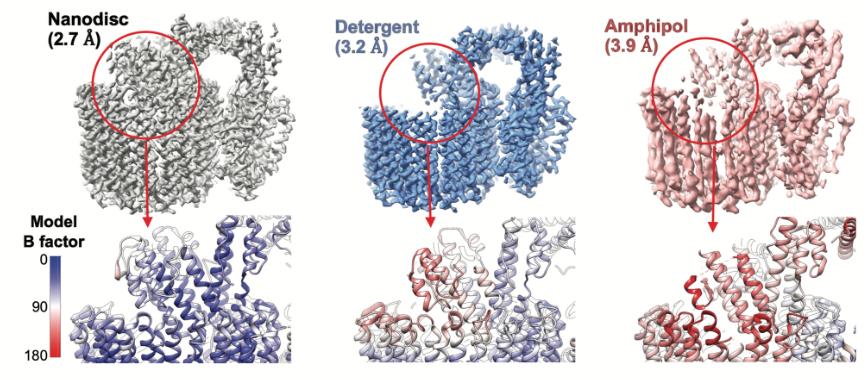
Fig. 2. Resolution and B-factor value comparisons among known cryo-EM structures of V-ATPase V0 complex. (Koh, et al. 2024)
Case 2: Nanodelivery with Nanodiscs: Unveiling Membrane Protein Dynamics Inside Living Cells
This study explores a new way to look at how membrane proteins change shape inside real cell membranes by using nanodiscs to deliver spin-labeled proteins into live cells. By employing DEER spectroscopy, researchers monitored the protein BsYetJ, successfully tracking its conformational shifts and calcium ion transport in E. coli and B. subtilis . This method highlights how different lipids affect protein shapes, moving past traditional barriers to offer insights under natural conditions.
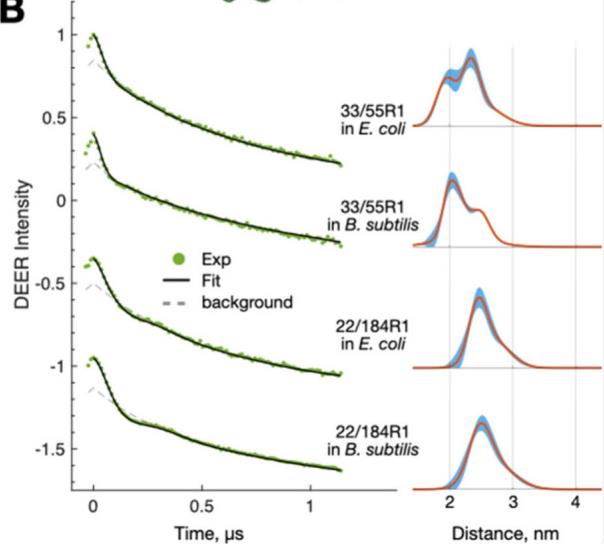
Fig. 3. DEER measurements. (Cheng, et al. 2024)
Case 3: Exploring Polymer Nanodiscs for De Novo Cytochrome Study
Polymer nanodiscs offer a promising way to study integral membrane proteins in their natural lipid setting, unlike traditional surfactants. Researchers explored using these polymers to isolate a custom-designed membrane cytochrome called CytbX. CyclAPols, a type of block copolymer, proved effective at extracting CytbX from biomembranes while still allowing for purification and analysis. CytbX, once solubilized in CyclAPols, maintained a stable structure similar to that in detergent micelles. However, electron transfer was notably quicker in micelles than in nanodiscs. These findings suggest that polymer nanodiscs can be valuable in studying and utilizing custom-built membrane proteins.
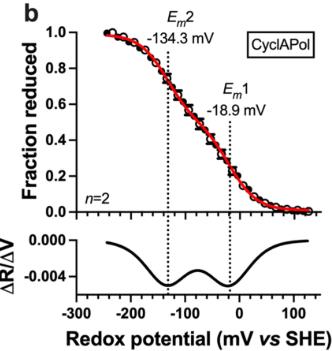
Fig. 4. Redox measurements recorded in CyclAPol nanodiscs. (Hardy, et al. 2024)
FAQs
-
Q: Can your platform express proteins with several domains or those bound to membranes?
A: Yes, our system is set up to express complex proteins, including those with multiple domains and those that are membrane-bound. This design makes sure the proteins fold properly and function as needed, solving typical challenges linked with these proteins. -
Q: What types of post-purification analyses do you offer to support protein research?
A: Following purification, we provide a range of analyses including tests for protein stability, structural studies, and evaluations of binding properties. These analyses are designed to offer comprehensive insights into the protein’s features and possible uses.
-
Q: Is your system equipped to handle large-scale protein production for industrial applications?
A: Yes, our platform is flexible and adept at managing both small and large-scale production needs. We customize the process based on the client’s requirements, making it ideal for both research and industrial-scale projects.
References
- Rouck JE.; et al. Recent advances in nanodisc technology for membrane protein studies (2012-2017). FEBS Lett. 2017;591(14):2057-2088.
- Dong Y.; et al. The application of nanodiscs in membrane protein drug discovery & development and drug delivery. Front Chem . 2024;12:1444801.
- Koh YH.; et al. Unraveling membrane protein localization and interactions in nanodiscs. FEBS Lett. Published online November 28, 2024.
- Cheng CC.; et al. In-Cell DEER Spectroscopy of Nanodisc-Delivered Membrane Proteins in Living Cell Membranes. JACS Au. 2024;4(10):3766-3770.
- Hardy BJ.; et al. Polymer nanodiscs support the functional extraction of an artificial transmembrane cytochrome. Biochim Biophys Acta Biomembr. 2025;1867(1):184392.
Contact us or send an email at for project quotations and more detailed information.
Quick Links
-

Papers’ PMID to Obtain Coupon
Submit Now -

Refer Friends & New Lab Start-up Promotions
